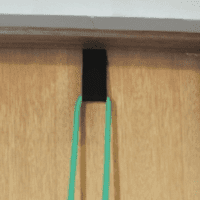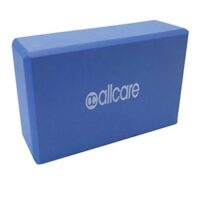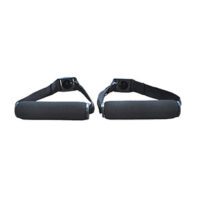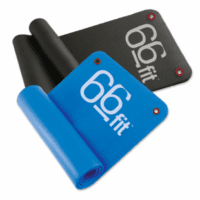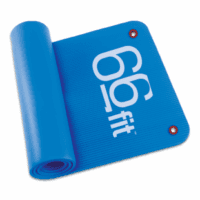Muscle Pain & Injury
Article by John Miller

Muscle Pain
Muscle Pain: How to Differentiate it from an Injury
Various causes can induce muscle pain. The important thing is to identify when muscle pain is self-managed and when to seek professional guidance.

Muscle Tears
Whether referred to as a “pulled muscle,” “muscle strain,” “muscle injury,” or “muscle tear,” these descriptions all indicate a muscle injury resulting in pain, weakness, and reduced performance. More info: Muscle Strain
Muscle Haematoma, DOMS & Cramps
Common sports-related causes of muscle pain include muscle contusions like a corked thigh, overtraining conditions like delayed onset muscle soreness (DOMS), or muscle cramps.
Rhabdomyolysis
Rhabdomyolysis is a severe condition where muscle fibres die, releasing their contents into the bloodstream. This serious condition can lead to kidney failure, requiring urgent medical attention.
Systemic Conditions
Not all muscle pain is injury-related; systemic conditions like fibromyalgia or rheumatoid arthritis can also cause it.
For a comprehensive assessment and diagnosis of your muscle pain, consult your trusted healthcare practitioner, given the various potential muscle injuries.
What Does a Muscle Injury Feel Like?
Symptoms of a muscle strain include sudden pain that worsens during muscle contraction, swelling and bruising, muscle weakness, and reduced range of motion.
- Muscle tightness
- Bruising
- Muscle weakness
- Inability to stretch your injured muscle
- Loss of function
- Muscle pain
How Do You Treat A Muscle Injury?
Muscle pain can result from any strain, injury, or tear, commonly affecting high-speed and load muscles like hamstrings, quadriceps, calf, back, and biceps.
More info:
How are Muscle Injuries Graded?
Muscle tears are graded from mild strain (Grade 1) to moderate strain (Grade 2) and complete rupture (Grade 3). Treatment options depend on the severity of the strain, tear, or rupture.
Grade I
Grade I muscle strains respond well to conservative treatment, including protection and active rest, with a gradual introduction to flexibility, strength, and power exercises based on the muscle’s functional needs. Massage therapy and dry needling are other available treatment options.
Grade II
Grade II muscle tears may require assistance from a sports physiotherapist or other healthcare practitioner specialising in muscle injuries. We recommend professionally guided rehabilitation to address scarring, inflexibility, reduced strength and performance, reducing re-injury risk.
Grade III
Grade III muscle rupture often necessitates surgery, followed by a gradual and progressive rehabilitation program under the guidance of the surgeon and physiotherapist. Seeking a professional assessment is crucial to determine the appropriate treatment.
What Helps Heal Muscle Injuries Faster After Injury?
Until receiving an accurate diagnosis, follow these guidelines:
- Seek advice from your physiotherapist, massage therapist, or trusted healthcare practitioner.
- Use ice and a compression bandage.
- Elevate the region if swollen.
- If walking is painful, use crutches.
- Reduce training until pain-free, which may include stopping all exercise.
When Can You Start Training again after a Muscle Strain Injury?
Returning to sports can be straightforward or complicated, depending on the affected muscle. Some muscle tears, such as hamstrings, can be challenging to manage. Ideally, follow these steps:
- Assess your muscle function, core stability, and biomechanics to prevent injury recurrence.
- Undergo remedial or sports-style massage to avoid the clumping of scar tissue.
- Follow a muscle rehabilitation program tailored to your chosen sport, including strength, endurance, flexibility, and speed training.
- Conduct a neural tissue dynamics assessment to ensure no nerve tissue entrapment in the scar tissue.
- Apply a heat retainer to the area upon returning to sport.
- Use ice therapy after training sessions.
Conclusion
In conclusion, recognising and understanding the difference between muscle pain and injury is essential for proper care and recovery. From muscle tears to systemic conditions, the causes of muscle pain can vary widely, and self-diagnosis may not always be accurate. Therefore, if you are experiencing persistent or severe muscle pain, seeking professional assessment and guidance from a physiotherapist or other qualified healthcare practitioner is crucial.
Your physiotherapist can thoroughly evaluate your condition, identify the specific muscle injury, and create a personalised treatment plan to facilitate a faster and safer recovery. They will guide you through appropriate exercises, rehabilitation programs, and preventive measures tailored to your needs and goals. Remember, early intervention and proper care can significantly affect your healing process and overall well-being.
So, don’t hesitate to take the first step towards recovery. Contact a trusted physiotherapist to address your muscle pain or injury effectively. Your active participation in seeking professional assessment will play a vital role in regaining strength, mobility and achieving a healthy, pain-free life. Take action today for a healthier tomorrow!
Rochedale - Call 38410277
Book Online: RochedaleSalisbury - Call 32751044
Book Online: SalisburySandgate - Call 32691122
Book Online: SandgateRelated Articles
- Understanding Muscle Pain vs. Other Conditions: Offers insights into differentiating muscle pain from systemic conditions like fibromyalgia and rheumatoid arthritis, as well as prevention and management strategies.
- Hip Adductor Tendinopathy Solutions: Discusses groin pain, including adductor-related pain and systemic diseases affecting the hip, which could be beneficial for readers experiencing related muscle discomfort.
- Greater Trochanteric Pain Syndrome (GTPS) Overview: Provides information on conditions related to hip and groin pain, including piriformis syndrome and muscle strain, and discusses systemic diseases affecting the hip.
- Effective Shin Pain Treatment and Management: Focuses on shin pain causes, including overuse injuries and systemic conditions, and offers treatment advice for shin splints and stress fractures.
- Thigh Pain Insights: Explores muscle pain and injuries affecting the thigh, making it relevant for readers looking to understand more about muscle-related discomfort in this area.
- Calf Strain and Tear Treatment: Offers a detailed guide on managing calf discomfort, including causes, treatment for strains and tears, and information on compartment syndrome and cramps.







